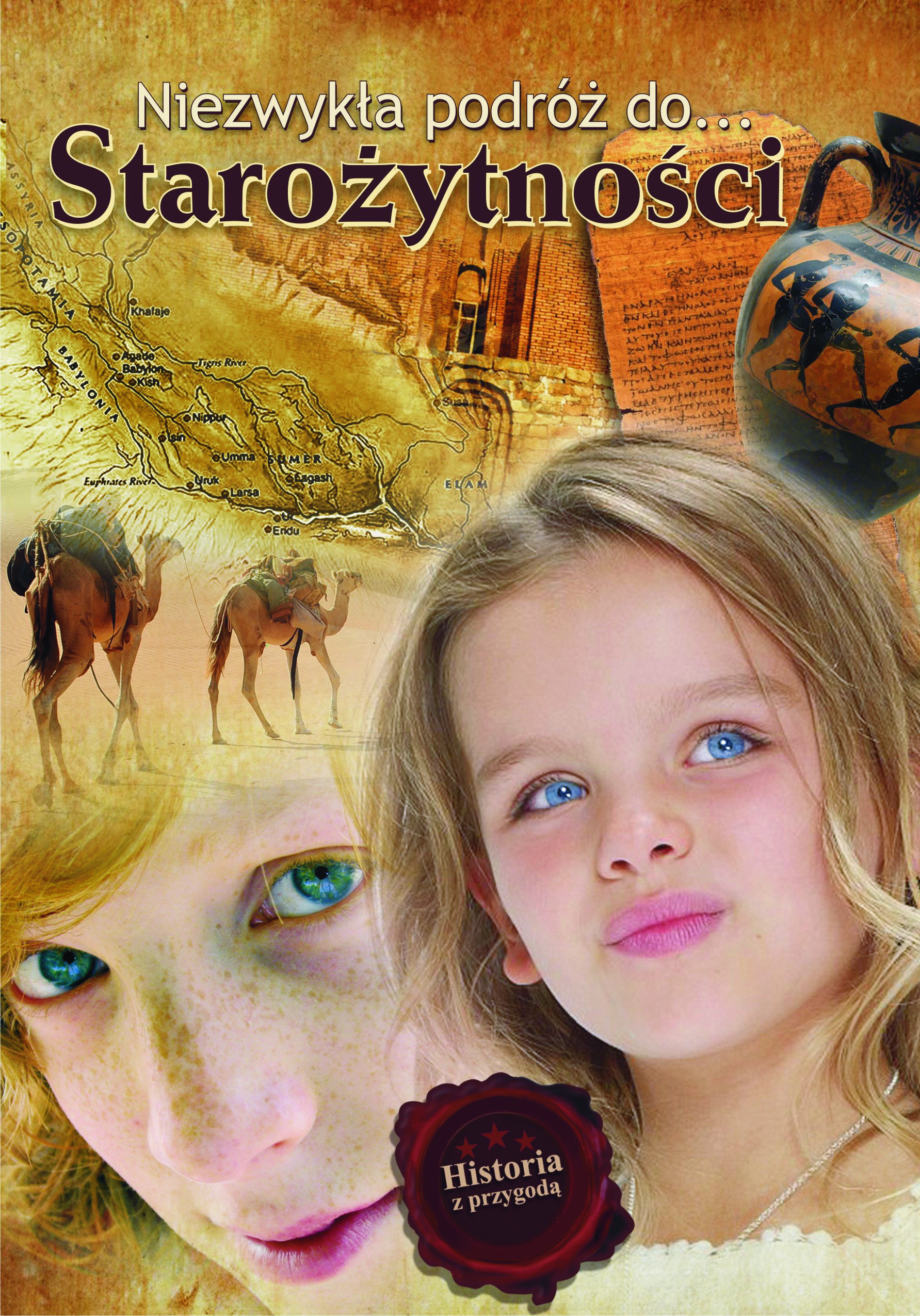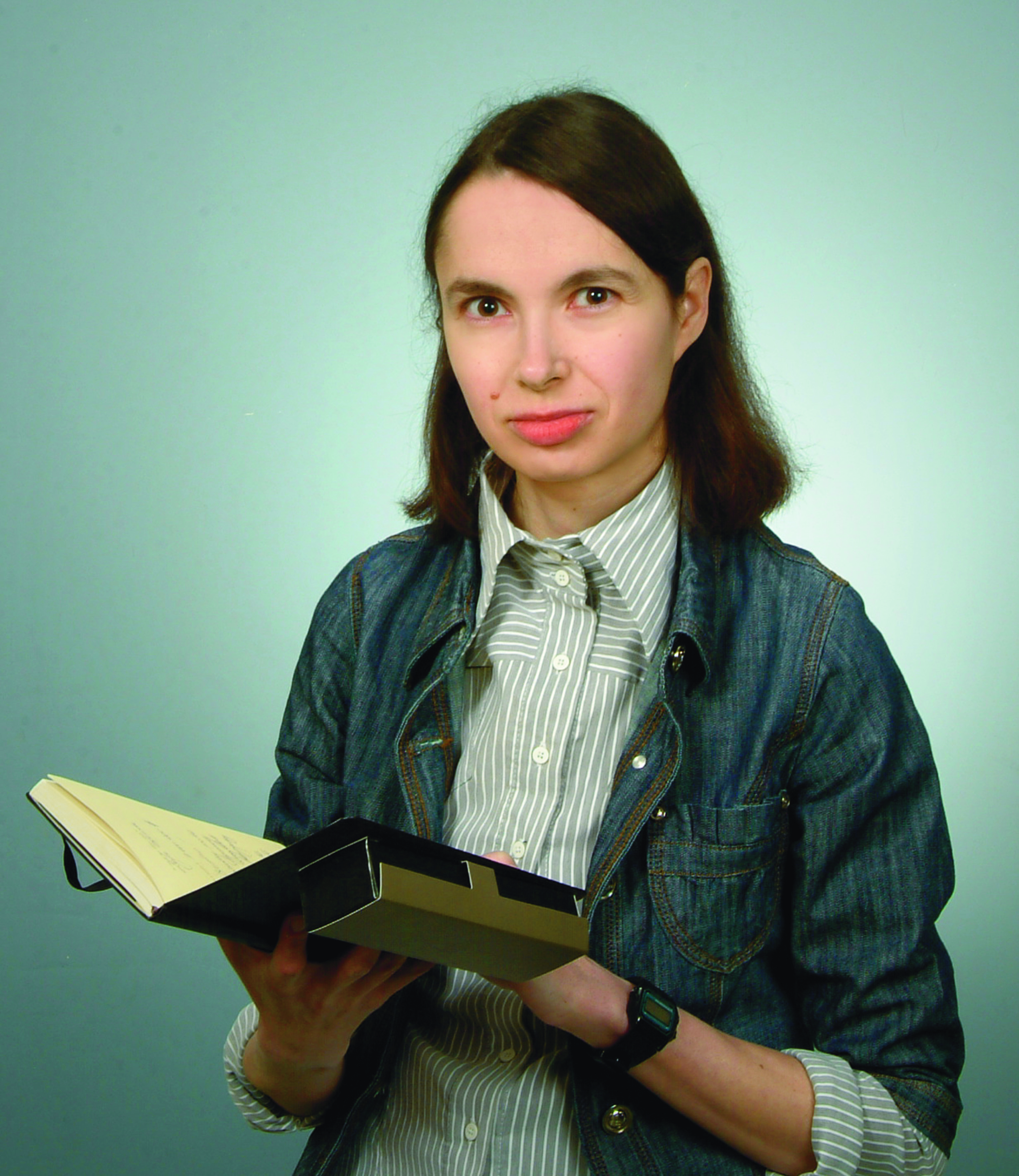Title of the work
Country of the First Edition
Country/countries of popularity
Original Language
First Edition Date
First Edition Details
Zofia Kaliska, Niezwykła podróż do Starożytności. Białystok: Wydawnictwo Printex, 2012, 119 pp.
ISBN
Genre
Time-travel fiction
Target Audience
Children (10–12)
Cover

Courtesy of the publisher.
Author of the Entry:
Summary: Zofia Górka, University of Warsaw, vounaki.zms@gmail.com
Analysis: Marta Pszczolińska, University of Warsaw, m.pszczolinska@al.uw.edu.pl
Peer-reviewer of the Entry:
Elżbieta Olechowska, University of Warsaw, elzbieta.olechowska@gmail.com
Hanna Paulouskaya, University of Warsaw, hannapa@al.uw.edu.pl

Photograph courtesy of the Author.
Zofia Kaliska
, b. 1978
(Author)
Zofia Kaliska is a historian who graduated from Adam Mickiewicz University of Poznań. She published her first novel in 2006. Writes books for children and adolescents as well as for adults. Her works include such titles as Rodzina Połamackich [The Połamacki Family], 2007; Rocznica [The Anniversary], 2009; Gdzie Chrystus nosił koronę cierniową [Where Christ Wore the Crown of Thorns], 2010, and Włócznia Wikingów [Viking Spear], 2013. She currently lives in Gniezno.
Source:
Bio is based on the material kindly provided by the Author.
Bio prepared by Zofia Górka, University of Warsaw, vounaki.zms@gmail.com
Summary
Based on: Katarzyna Marciniak, Elżbieta Olechowska, Joanna Kłos, Michał Kucharski (eds.), Polish Literature for Children & Young Adults Inspired by Classical Antiquity: A Catalogue, Faculty of “Artes Liberales”, Warsaw: University of Warsaw, 2013, 444 pp.
Contemporary Poland: Igor receives an old history book as a birthday present. He and his sister Iga realize they can travel in time using the book. Each time they begin to read a new chapter, they are transported to the corresponding period of history. First, the siblings visit ancient Babylonia. They end up in a royal palace, where they meet king Hammurabi and become the very first people to admire his (unfinished at the time) code of laws. Their next journey leads to ancient Egypt, where the siblings are captured by the servants of the vizier Paser who plans to use Igor in his plot against the Pharaoh. The boy flees the palace while his sister gets to Memphis, where she witnesses Moses’ and Aaron’s confrontation with the Pharaoh. On their third journey, the children visit classical Athens; their guide is young Thucydides. The siblings encounter Socrates and witness a conversation between Pericles and Phidias. During their last journey, Igor and Iga experience the siege of Alesia and then end up in the house of Julius Caesar, where they befriend young Octavian. With each journey, Iga becomes more and more interested in history, to the joy of her history-obsessed brother.
Analysis
Time travel is used as a clever narrative device facilitating the child reader to look into four ancient cultures from the perspective of a child who is not yet familiar with many aspects of life in Antiquity. The child’s perspective is evident in the character of the protagonist, Iga, who narrates the story. Iga is a ten-year-old child who serves as the reader’s eyes, ears, and voice. She focuses on matters adults would not because they are already familiar with them and asks questions adults already know the answers to. This way, the readers benefit from her character and learn while reading about the ancient adventures of their peers. The two child protagonists have different interests and personalities – Igor, unusually for a child his age, is passionate about history and has a wide knowledge of historical facts, characters, and background. In contrast, his younger sister does not know as much about history (history as a school subject starts right at the age of ten, so she is at the beginning of her historical education) but is curious and tries to learn everything herself. She starts by being increasingly interested in antiquity as they travel in time; she seeks information and wants to gain historical knowledge by reading and asking her teacher and not only by experiencing things in ancient times she was unaware of. Her growing interest demonstrates that historia vitae magistra – history is the teacher of life – and proves to children its worth.
Using the perspective of a ten-year-old girl, the author is not as much focused on specific facts (although they provide an accurate background) but rather shows people in their environment as seen by children. Most historical figures Iga and Igor meet in Antiquity are children just like them and behave as ordinary children would. For instance, Thucydides, their Athenian guide, skips school and is chided by his grandfather for wandering around town with barbarian children. He also shows Athens and points out its eminent inhabitants, including Socrates or his – not yet eminent – schoolmate Hippocrates of Kos. The anxiety of meeting great historical figures with strong personalities is diminished; in the novel, they are “tamed” second-plan characters. This way, the child protagonists witness the dialogue between Pericles and Pheidias not as participants but as passers-by or accidental witnesses. Similarly, they meet Vercingetorix but do not face him; they live in Julius Caesar’s Roman house, treated as his familiares (family members), but speak only with Calpurnia, his wife, and his young nephew Octavian and not with Caesar himself.
The children’s perspective is maintained not only by presenting their naivete, curiosity, or lack of cultural knowledge leading to misunderstandings or offense (the girl speaks to Thucydides’ grandfather unasked and intends to watch the Olympics Games as part of the audience, which is considered breaking the rules, conventions and lack of good manners but also an offense to their sensitivity). The children also show sympathy in front of Calpurnia for the conquered Gallic tribes, the ordinary people they lived and suffered hunger with. They barely understand the words “perished” or “sold” when it refers to the unfortunate inhabitants of Alesia, including children. The author tactfully glosses over the cruelties of war, letting the protagonist faint during the bloody massacre. Iga regains her consciousness in Rome, where she learns the fate of the Gauls but does not witness any of the horrors.
They also try to understand slavery and social stratification within Rome. The enslaved servant, sent with them by their hosts, explains that his fate is better than that of Roman plebs dwelling in insulae (tenement buildings) as he is well and does not work very hard. He prefers to be enslaved to a rich family than to be a man free but poor and without prospects for a better life.
The information provided by the author includes some historical facts (Mycenaean age, Athens and Sparta, the Persian Wars, the siege of Alesia) and cultural phenomena, such as ancient garments, an Athenian theater, the position of women in Athens, Gallic beliefs, the role of druids in Gaul, the stratification of the Roman society, Roman slavery, buildings, institutions, customs, etc. The information is not presented like in a school textbook. Rather, it fluently complements the children’s adventures letting the reader better understand historical and cultural differences between the ancient world and their own.
Further Reading
Allen, George H., “Excavations on the Site of the Ancient Town of Alesia”, The Classical Weekly 28.22 (1935): 169–176.
Bellemore, Jane, “Caesar’s Gallic Woman under Siege”, Latomus 75.4 (2016): 888–909.
Patterson, Cynthia, “Other Sorts: Slaves, Foreigners, and Women in Periclean Athens”, in The Cambridge Companion to the Age of Pericles, Loren J. Samons II, ed., Cambridge: Cambridge University Press, 2007, 153–178.
Raepsaet-Charlier, Marie-Thérèse, “Alésia et ses dieux: du culte d’Apollon Moritasgos à l’appartenance civique des Mandubiens à l’époque Gallo-Romaine”, L’Antiquité Classique 82 (2013): 165–194.
Richter, Donald C., “The Position of Women in Classical Athens”, The Classical Journal 67.1 (1971): 1–8.


